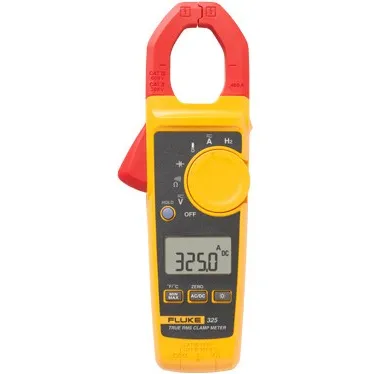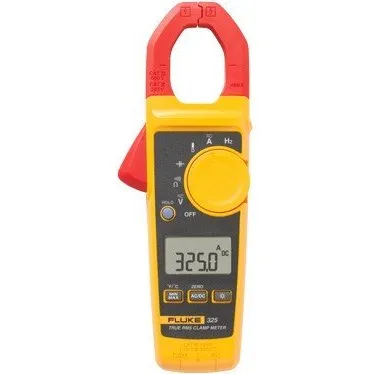Fluke 1587 T Insulation Multimeter
Specially designed for the telecom industry, the insulation multimeter is reliable and easy to use when working on motors, generators, cables, or switchgear. With a large backlight display and an auto-discharge of capacitive voltage, this meter provides maximum versatility for both troubleshooting and preventative maintenance.
View all
KWD 371.380
Description
Fluke 1587 T Offers Features True RMS voltage and current for accurate measurements Digital display counts of 6000 Auto-range and manual range for easy testing Selectable filter for accurate voltage and frequency measurements on motor drives Special remote control probe for easy and safe measurements Auto-discharge of capacitive voltage for added user protection Live circuit detection prevents insulation test if voltage > 30 V is detected for added user protection Auto power off to save batteries Large display with backlight Input Alert to warn for incorrect connections Continuity 6 Tips for effective insulation testing 1 Disconnect any electronic devices like motor drives, PLC’s, transmitters, etc. before performing insulation testing. Electronics can be damaged by applying higher than normal voltage. 2 The effect of temperature should be considered - it is recommended that tests be performed at a standard conductor temperature of 20 °C (68 °F) or that a temperature baseline is established while compensating future readings by using a DMM with a probe or an infrared thermometer. 3 Select a test voltage appropriate for the insulation being tested. The objective is to stress the insulation but not to over-stress it. When in doubt, use a lower test voltage. It’s usually appropriate to test insulation at twice the voltage it normally sees: for example 460 V to 600 V rated equipment is often tested at 1000 V. 4 When using an insulation tester, leave the leads connected when you stop the test. The insulation tester can discharge any residual test voltage. 5 Conductors that are close to each other have a normal capacitance. This will cause an insulation resistance reading to start low and increase steadily until it stabilizes. This type of increase is normal, but if the reading jumps violently down and up again this indicates arcing. 6 Although the current is tightly limited, an insulation tester can generate sparks and minor but painful burns. The unexpected surprise can cause an operator to jerk away. As always, work away from live systems and use safe work practices when working overhead. Insulation Resistance Testing Solutions
Downloads
Specifications
- Maximum: -40 to 998.6°F (-40 to 537°C) Maximum Resolution: 32.1°F (0.1°C) Accuracy: ± (1% + 10)
- Operating: -4 to 131°F (-20 to 55°C) Storage: -40 to 140°F (-40 to 60°C)
LEGAL DISCLAIMER
All products are 100% genuine and legally purchased from authorized sources. Indspare is not an authorized dealer, agent or affiliate of any of the designers, brands, or manufacturers, the products of which are offered for sale on www.indspare.com. All trademarks, brand names, and logos mentioned are used for identification purposes only and are registered trademarks of their respective owners who reserve the rights of ownership. The use of trademark, brand name or product on our website is not intended to suggest that the company, trademark or brand is affiliated to or endorses our website.








